Lighting in a classroom isn’t just about visibility—it’s a powerful tool that can shape the way students learn, focus, and even feel. From enhancing concentration to fostering creativity, the right lighting design can transform a mundane space into an inspiring learning environment. Over the years, I’ve seen firsthand how innovative lighting solutions can make a significant difference in educational settings, whether it’s through the strategic use of natural light or the integration of smart, energy-efficient systems. With so many options available, from adjustable pendant lighting to color-changing LED strips, the possibilities are endless. If you’re looking to create a classroom that not only looks great but also supports better learning outcomes, you’re in the right place. Let’s dive into 25 classroom lighting ideas that can elevate the educational experience for students and teachers alike.
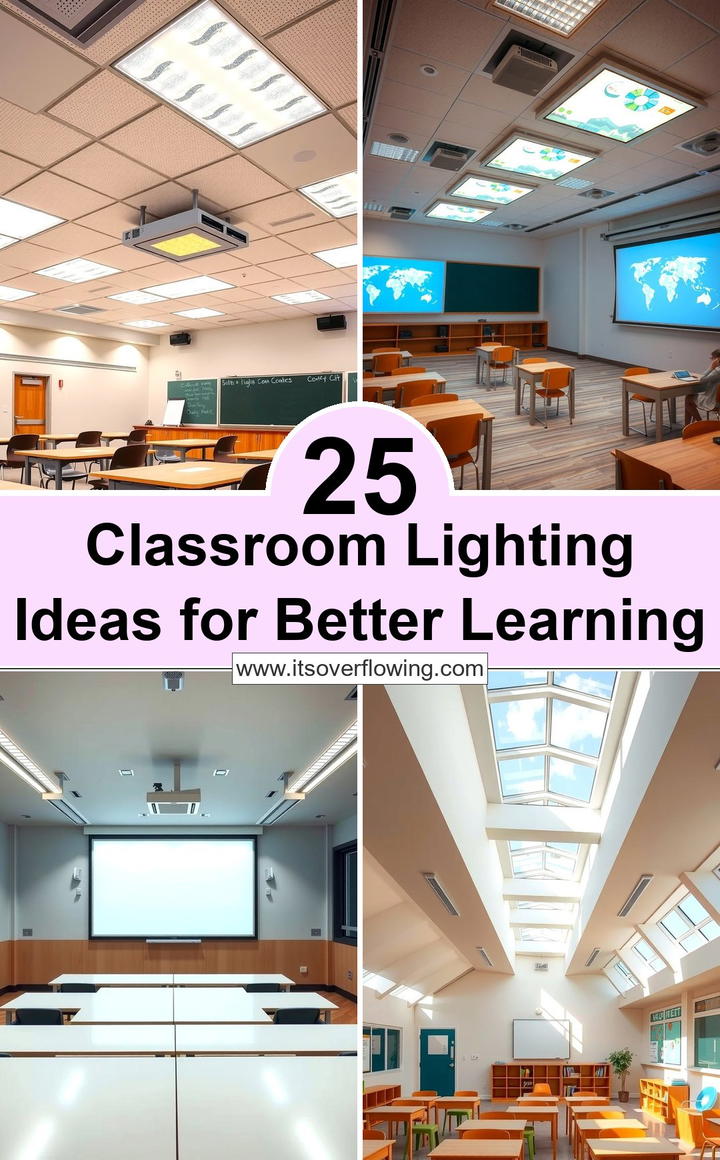
1. Natural Light Integration
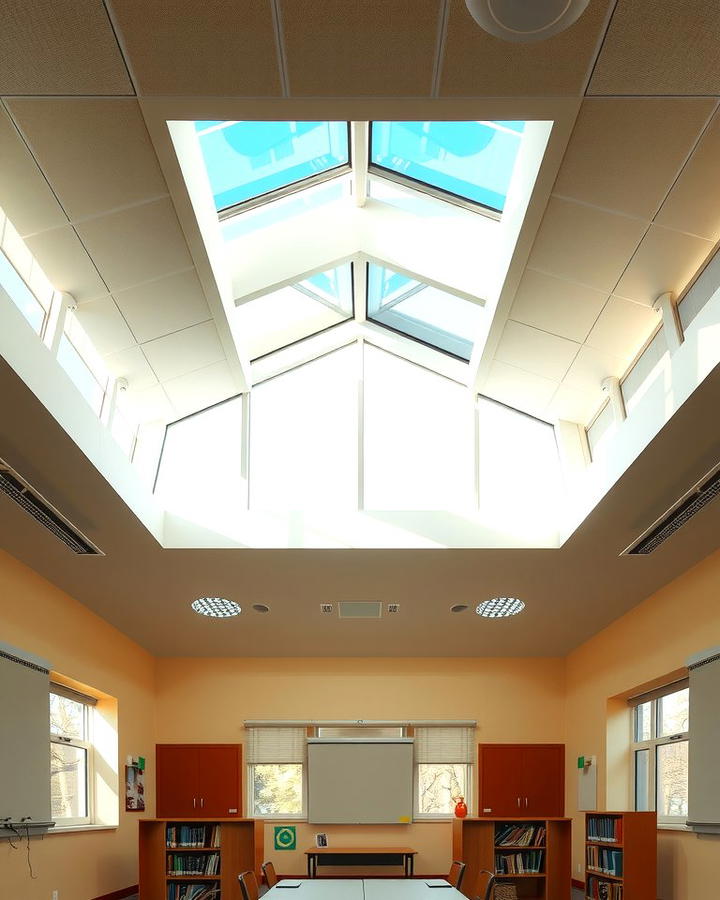
Incorporating natural light into a classroom design fosters a welcoming and energizing environment. Research shows that exposure to sunlight can enhance students’ concentration and mood, leading to better academic performance. Large windows, skylights, or strategically placed mirrors can maximize natural light flow throughout the space. To control glare, sheer curtains or adjustable blinds can be installed. Furthermore, natural light reduces energy consumption, making it an eco-friendly solution. This approach not only saves costs but also creates a healthier learning atmosphere for students and teachers alike.
2. Adjustable Pendant Lighting
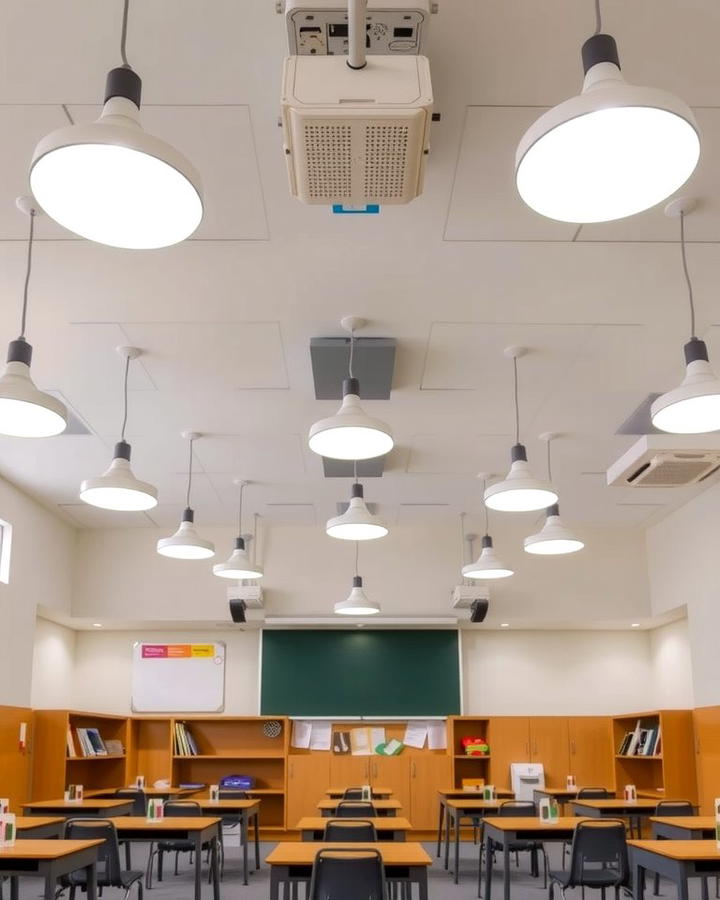
With adjustable pendant lighting, classrooms can adapt to various teaching and learning needs. These lights provide focused illumination for specific areas, such as reading corners or art stations. Their adjustable height feature allows customization, ensuring the right brightness for different activities. Additionally, pendant lights add a modern and stylish aesthetic to the space. Whether used as task lighting or decorative accents, they enhance functionality while improving the overall classroom ambiance. This versatile option ensures both practicality and design elegance.
3. LED Overhead Panels
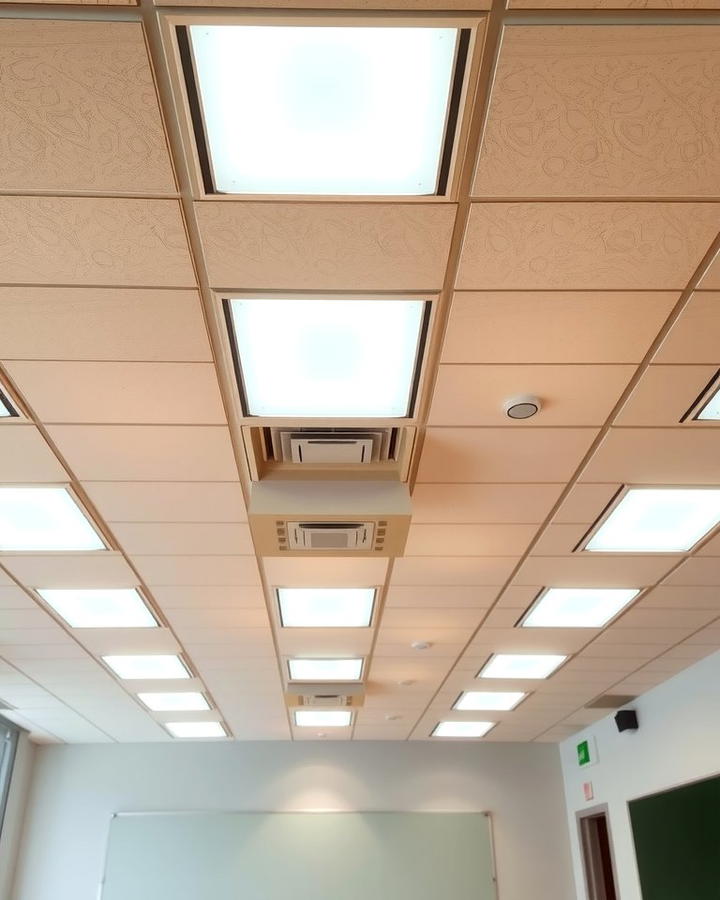
LED overhead panels are an energy-efficient and long-lasting solution for classroom lighting. These panels distribute light evenly across the room, minimizing shadows and reducing eye strain for students. Their soft, white light closely mimics natural daylight, creating a comfortable learning environment. Furthermore, LED options consume significantly less energy compared to traditional fluorescent lights, resulting in lower utility bills. With their sleek and modern design, LED panels blend seamlessly into ceilings, making them a practical and aesthetic choice for educational spaces.
4. Dimmable Lighting Systems
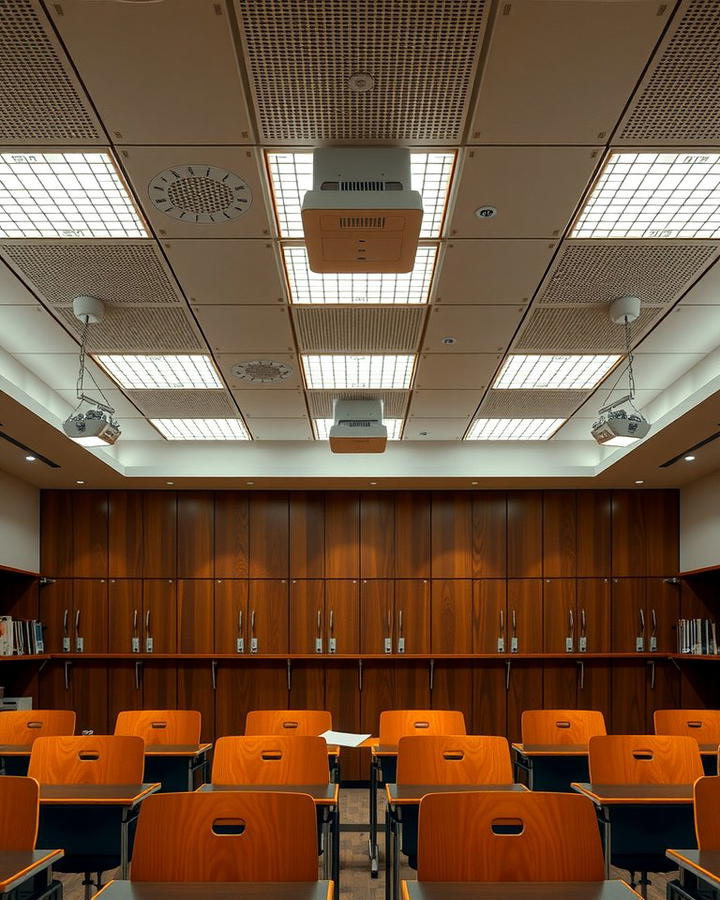
Dimmable lighting systems offer flexibility by allowing teachers to adjust brightness levels according to classroom activities. For instance, brighter settings can be used during lectures, while dimmer settings create a calming atmosphere for reading or group discussions. These systems cater to different learning styles and help reduce eye strain. Moreover, dimmable lights contribute to energy savings by consuming less power when used at lower settings. This customizable lighting solution ensures a versatile and student-friendly environment, supporting both focus and relaxation.
5. Task-Specific Desk Lamps
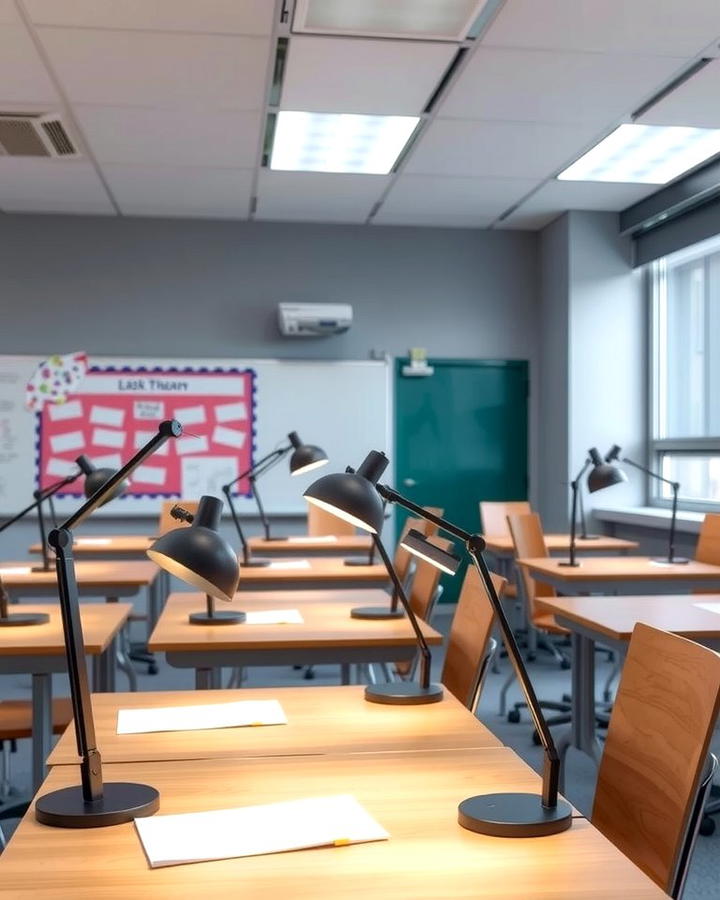
Task-specific desk lamps provide focused lighting for individual workstations, promoting productivity and reducing distractions. These lamps are especially useful for activities like reading, writing, or drawing, where precision is required. Adjustable designs allow students to direct light exactly where needed, preventing glare and eye fatigue. Additionally, modern desk lamps often come with energy-efficient LED bulbs and sleek designs, making them both functional and stylish. Incorporating these lamps into classrooms encourages independent learning and ensures optimal lighting for every task.
6. Colored Accent Lighting

Colored accent lighting introduces a playful and dynamic element to classroom design. By using LED strips or colored bulbs, teachers can create zones that stimulate creativity or relaxation. For example, blue lighting can promote calmness, while warm tones encourage collaboration. These lights can also be used to highlight bulletin boards or artwork, adding visual interest to the room. Furthermore, adjustable color options allow for quick changes to suit different activities or moods. This creative approach makes the learning environment more engaging and vibrant.
7. Smart Lighting Solutions
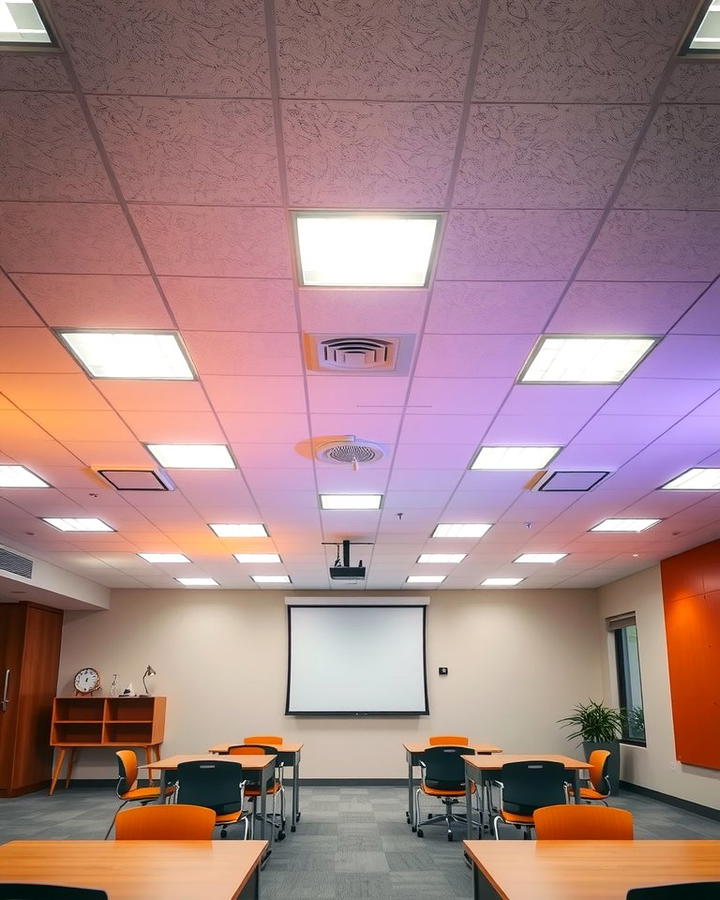
Smart lighting solutions bring technology into the classroom, offering convenience and energy efficiency. These systems can be controlled remotely via apps or voice commands, allowing teachers to adjust brightness, color, or schedules easily. Motion sensors can automatically turn lights on or off, reducing unnecessary energy usage. Additionally, smart lighting enables customization for different teaching scenarios, such as presentations or quiet reading time. This innovative option not only simplifies classroom management but also supports a modern, tech-savvy learning environment.
8. Under-Cabinet Lighting
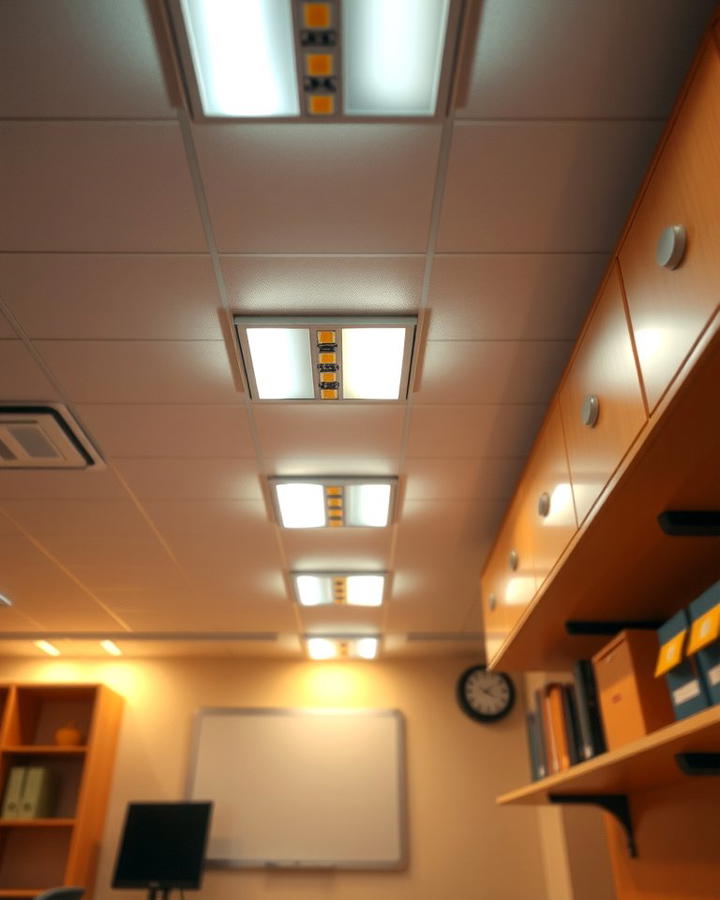
Under-cabinet lighting is a subtle yet effective way to brighten workspaces in classrooms. Installed beneath shelves or cabinets, these lights provide targeted illumination for tasks like reading or organizing materials. They reduce shadows and create a clutter-free appearance by keeping the light source out of direct view. LED options are particularly popular for their energy efficiency and slim design. Furthermore, under-cabinet lighting adds a professional and polished touch to the classroom, enhancing both functionality and aesthetics.
9. String Lights for Ambiance
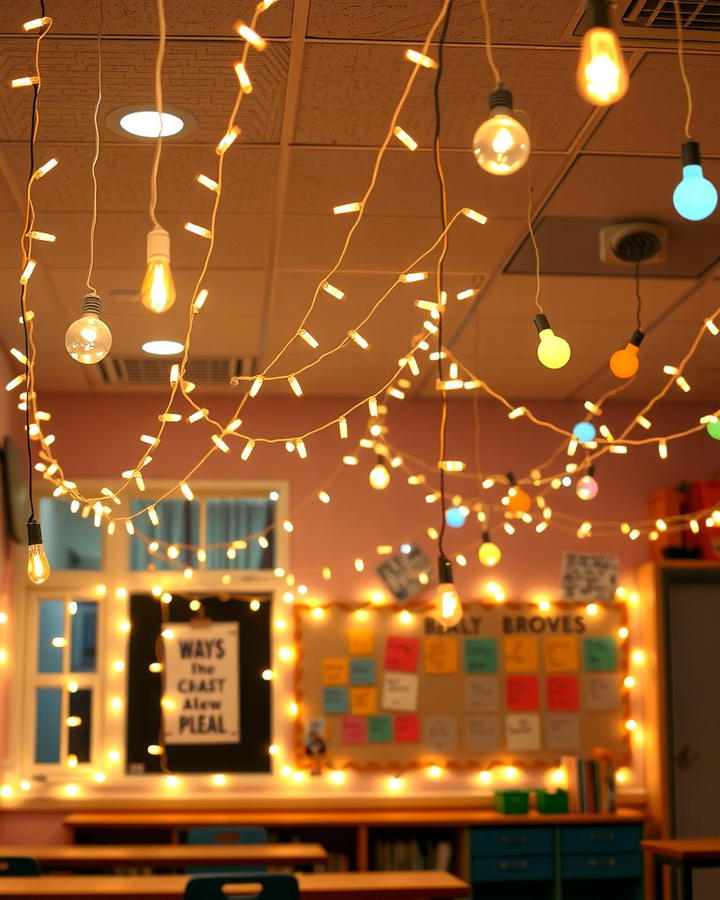
String lights bring a cozy and whimsical feel to classroom spaces, making them ideal for relaxation corners or special events. These lights are easy to install and can be draped around windows, bulletin boards, or ceilings. Their soft glow creates a warm and inviting atmosphere, helping students feel at ease. Additionally, string lights come in various shapes and colors, allowing for creative customization. This affordable and versatile option adds charm to the classroom while fostering a positive and engaging environment.
10. Recessed Lighting
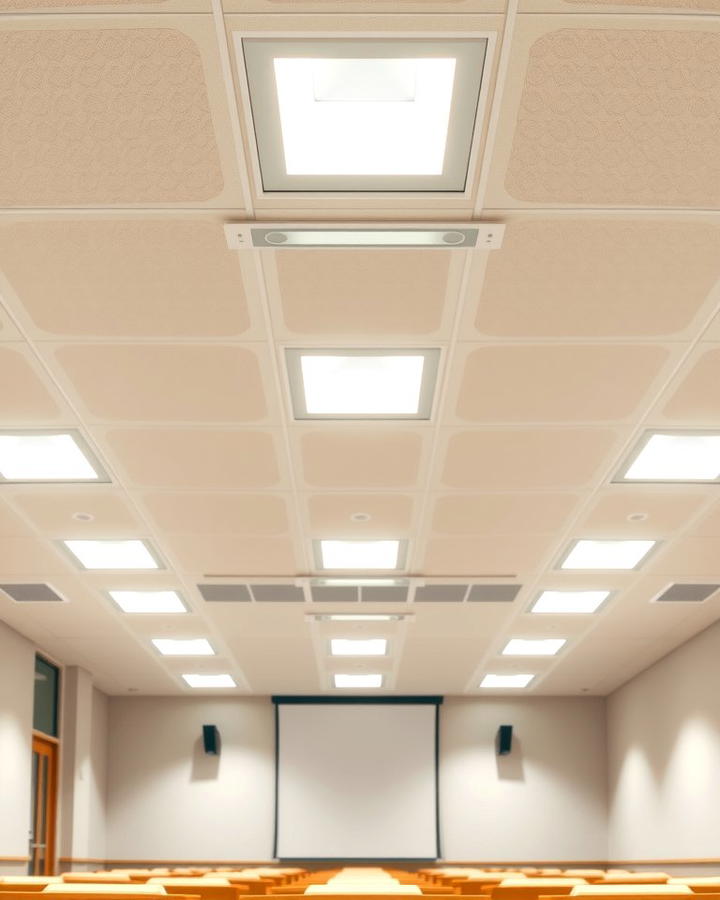
Recessed lighting offers a sleek and modern solution for illuminating classrooms without taking up overhead space. Installed flush with the ceiling, these lights provide even and shadow-free illumination. They are particularly effective in rooms with low ceilings, as they create a spacious and clean look. LED recessed lights are a popular choice for their energy efficiency and long lifespan. Moreover, dimmable options allow for flexible brightness levels to suit various activities. This minimalist lighting approach ensures functionality without compromising style.
11. Interactive Projection Lighting
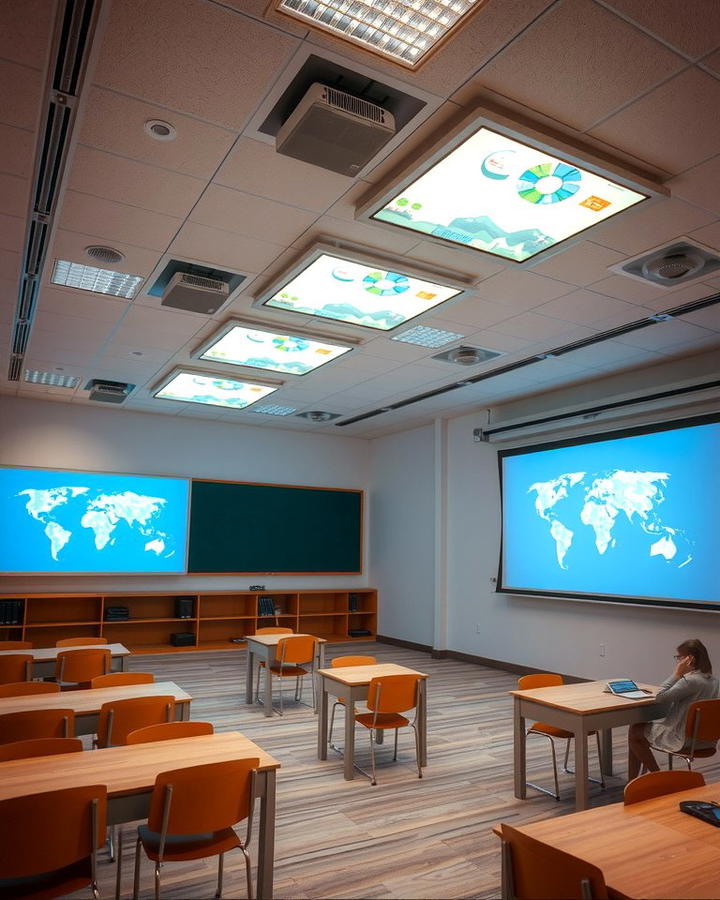
Interactive projection lighting transforms traditional classrooms into dynamic learning environments. These systems use projectors to display engaging visuals, such as interactive maps or educational games, on walls or floors. The combination of light and technology encourages active participation and enhances understanding of complex concepts. Additionally, projection lighting is adaptable for different age groups and subjects, making it a versatile educational tool. This innovative approach fosters collaboration and creativity, providing students with a unique and immersive learning experience.
12. Floor Lamps for Flexibility
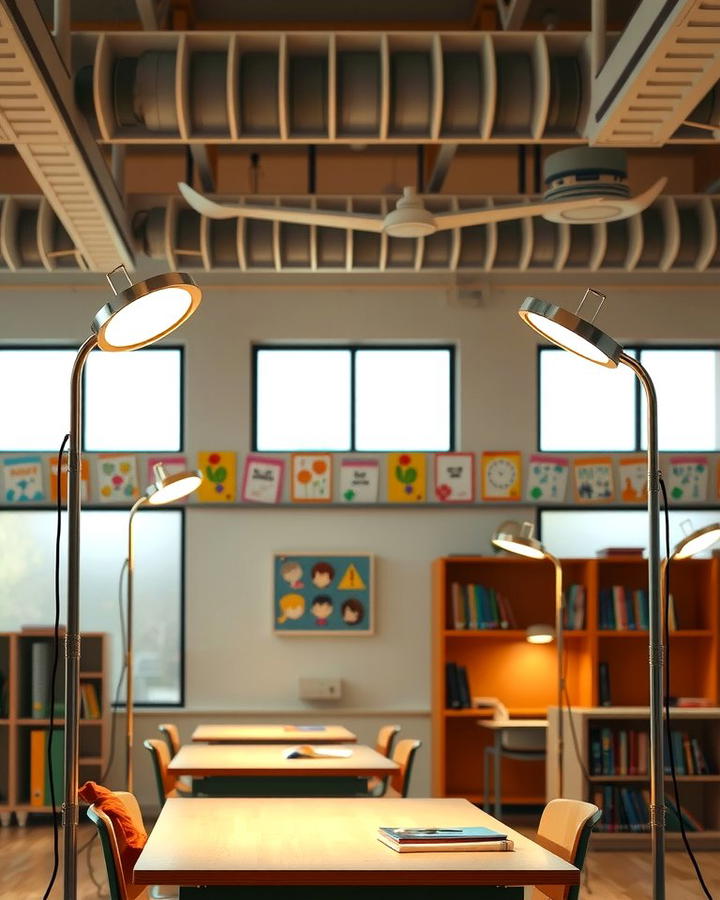
Floor lamps offer a portable and adaptable lighting solution for classrooms. These lamps can be moved to different areas as needed, providing targeted illumination for group activities or reading corners. Their adjustable height and direction features ensure optimal lighting for various tasks. Modern floor lamps often come with energy-efficient bulbs and stylish designs, adding both functionality and aesthetic appeal. This versatile option allows teachers to create well-lit spaces wherever required, enhancing the overall learning environment.
13. Light-Up Whiteboards
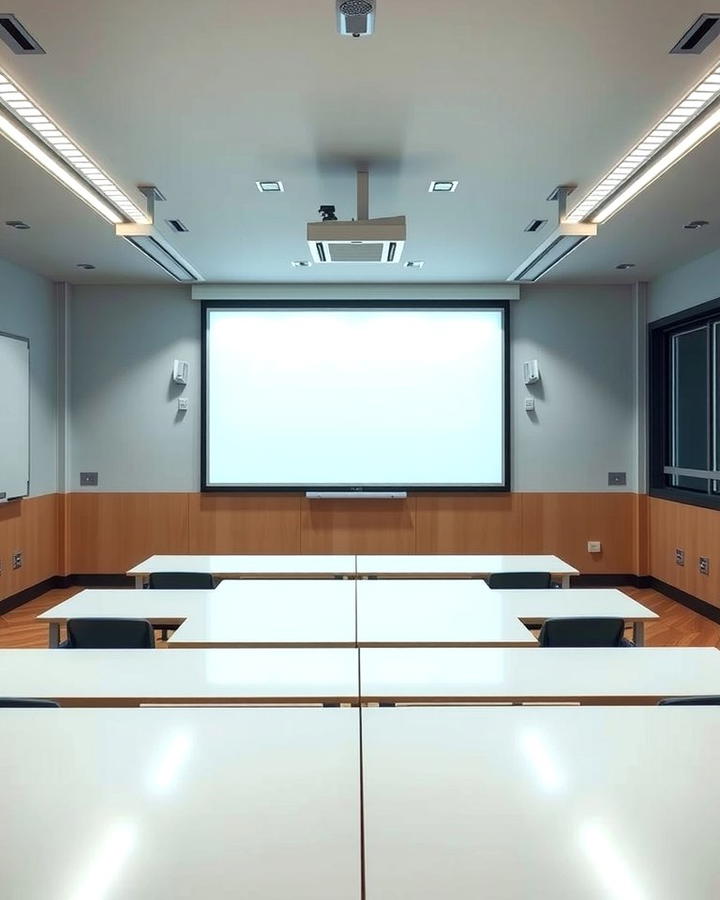
Light-up whiteboards combine functionality with innovative lighting to enhance classroom presentations. Integrated LED lights illuminate the writing surface, ensuring clear visibility even in dimly lit settings. These boards are especially useful for highlighting key points during lessons or group discussions. Additionally, some models feature adjustable brightness levels to suit different teaching scenarios. The sleek and modern design of light-up whiteboards adds a high-tech vibe to the classroom, making them an efficient and engaging tool for both students and teachers.
14. Ceiling Fans with Lights
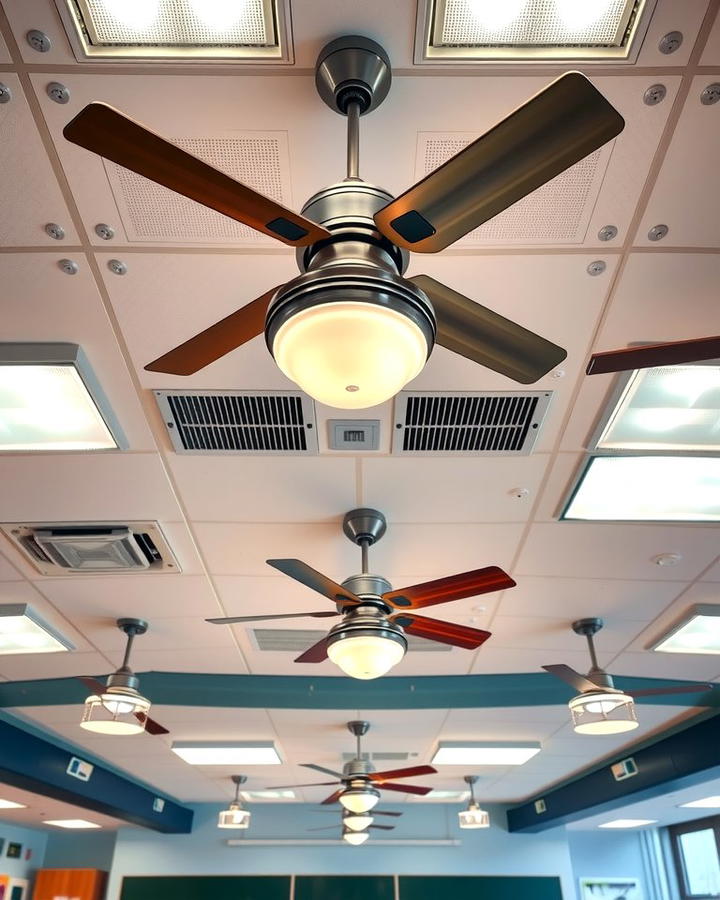
Ceiling fans with integrated lights serve a dual purpose in classrooms by providing both illumination and ventilation. These fixtures improve air circulation, creating a comfortable learning environment, especially in warmer climates. The light component typically features energy-efficient LED bulbs, ensuring cost savings and bright illumination. Moreover, ceiling fans with lights are available in various designs to complement classroom aesthetics. This practical and space-saving option enhances comfort and functionality, supporting a productive and pleasant atmosphere for students and teachers.
15. Flexible Desk Lamps for Individualized Lighting
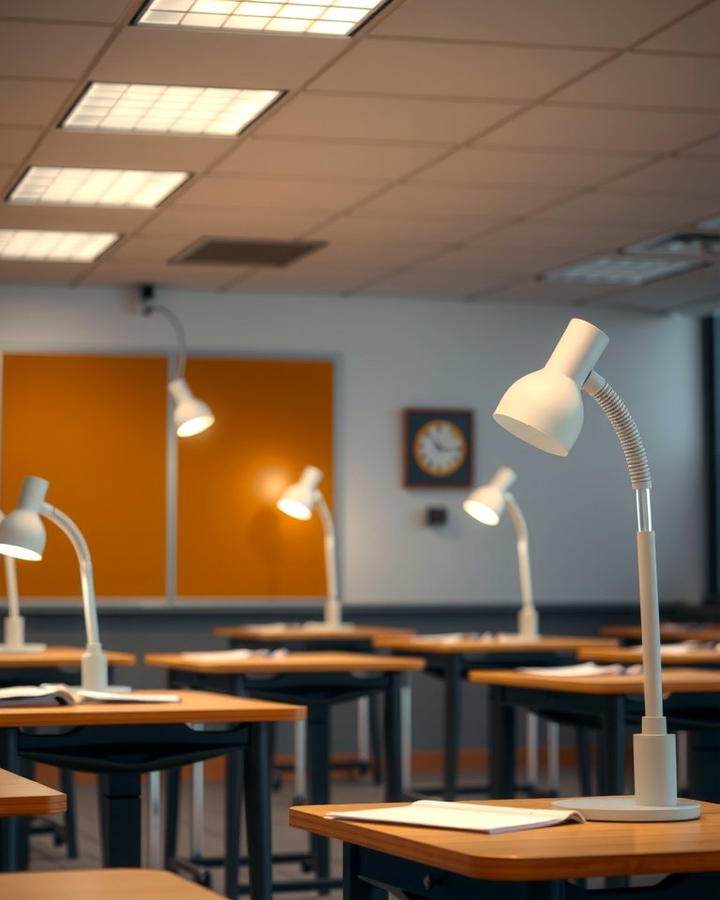
With adjustable desk lamps, students can control their own lighting needs. These lamps allow learners to focus light directly on their work, reducing eye strain and ensuring clarity during detailed tasks like writing or drawing. Additionally, flexible desk lamps come in various designs, providing both functionality and style. For classrooms with diverse activities, they offer the added benefit of adaptability. By incorporating these lamps, educators can create a personalized lighting experience, fostering a productive and comfortable environment for every student.
16. Ceiling-Mounted LED Panels for Uniform Illumination
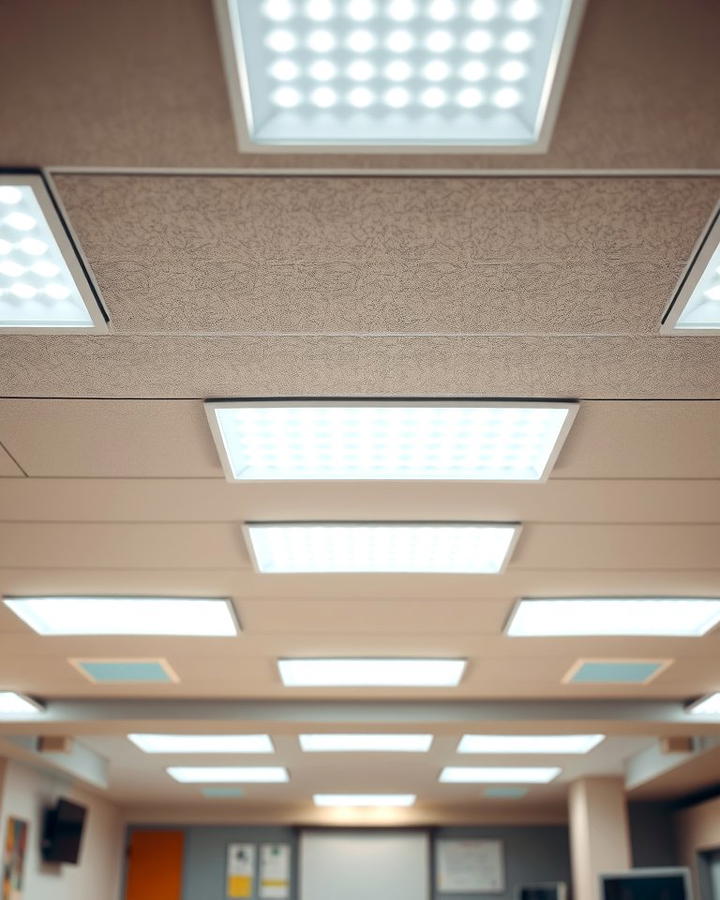
Ceiling-mounted LED panels provide consistent, glare-free lighting across the classroom. Unlike traditional fluorescent lights, these panels emit a softer, evenly distributed glow that reduces shadows and enhances visibility. Furthermore, they are energy-efficient, offering significant cost savings over time. For educators, this lighting option ensures that all students, regardless of seating position, benefit from optimal brightness. By upgrading to LED panels, classrooms can maintain a modern and welcoming atmosphere while promoting focus and reducing visual fatigue.
17. Task Lighting for Focused Activities
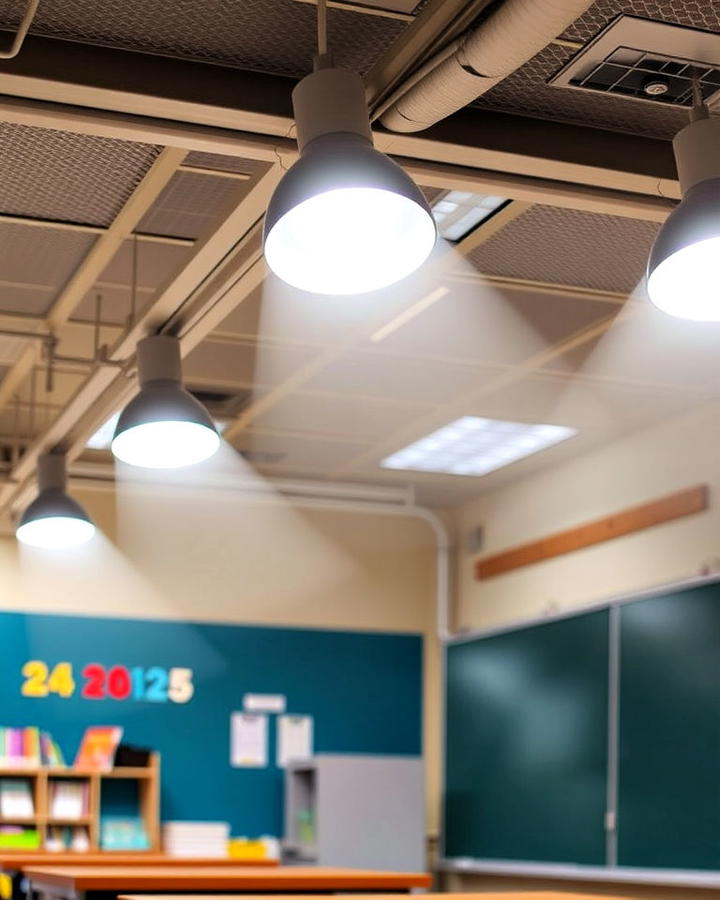
In areas designated for specialized tasks, task lighting offers a practical solution. These lights are ideal for reading corners, art stations, or science labs, where focused illumination is essential. Their concentrated beams enhance visibility for detail-oriented activities, fostering better outcomes and precision. Moreover, task lighting helps create defined zones within the classroom, making it easier for students to transition between activities. By incorporating this feature, educators can support varied learning needs while maintaining an organized and functional space.
18. Dimmable Lights for Adjustable Brightness
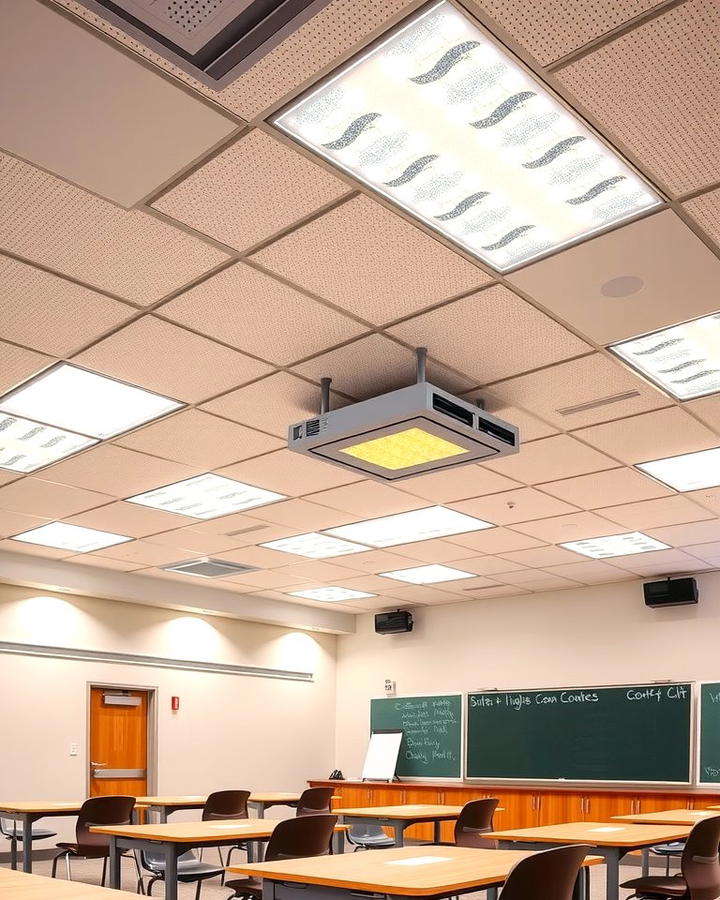
Dimmable lighting systems allow teachers to adjust brightness levels based on the activity or mood. Whether it’s a bright setting for group learning or a dimmed ambiance for quiet reading, these lights provide unparalleled flexibility. Additionally, dimmable fixtures help reduce energy consumption when full brightness isn’t necessary. For interactive lessons involving screens, lowering the lights can improve screen visibility and reduce glare. By integrating dimmable lighting, classrooms can adapt seamlessly to different teaching methods and student preferences.
19. Natural Light Integration with Skylights
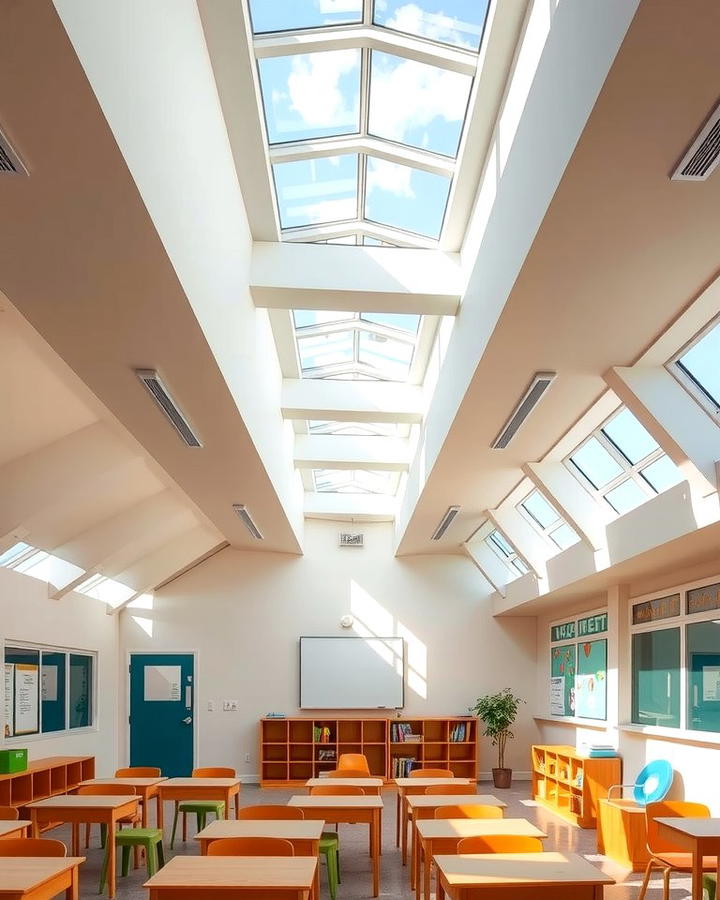
Skylights bring abundant natural light into classrooms, creating an uplifting and energizing environment. This design not only reduces reliance on artificial lighting but also has proven benefits for student well-being and concentration. Moreover, natural light enhances color perception, making classroom materials more vibrant and engaging. For schools aiming to implement eco-friendly solutions, skylights are an excellent choice. By incorporating these features, educators can foster a healthier, more inspiring learning space that aligns with sustainability goals.
20. Color-Changing LED Strips for Creative Spaces
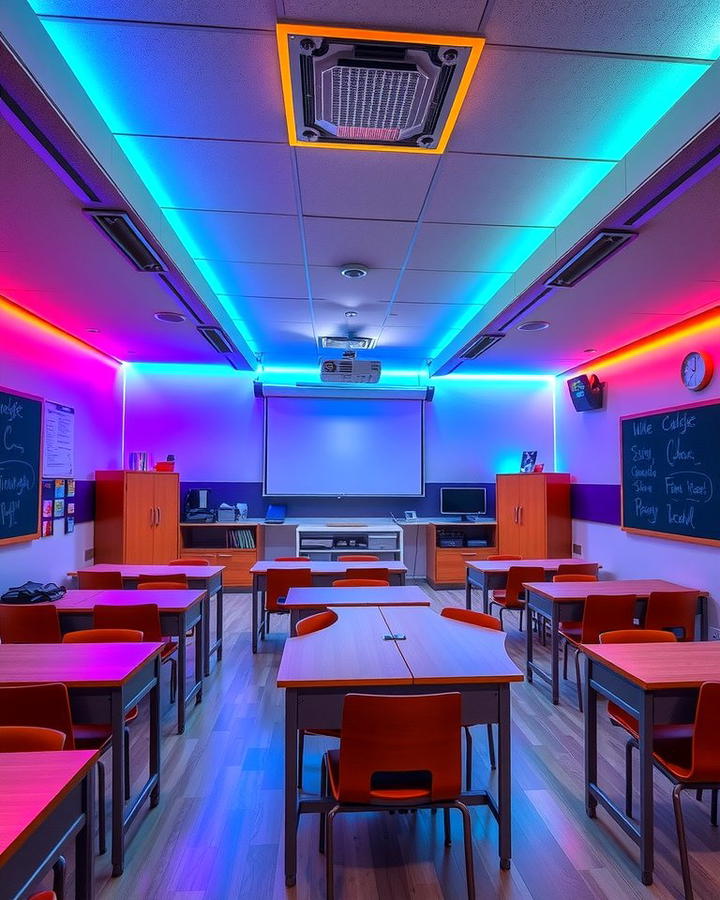
Color-changing LED strips are a fun and versatile way to enhance classroom decor and functionality. These lights can be programmed to display various hues, creating a dynamic environment that suits different activities or themes. For instance, calming blues can be used during reading time, while vibrant colors energize group discussions. Additionally, LED strips are easy to install along walls, desks, or shelves, adding a modern touch to the space. By using this feature, educators can inspire creativity and engagement among students.
21. Accent Lighting for Display Boards
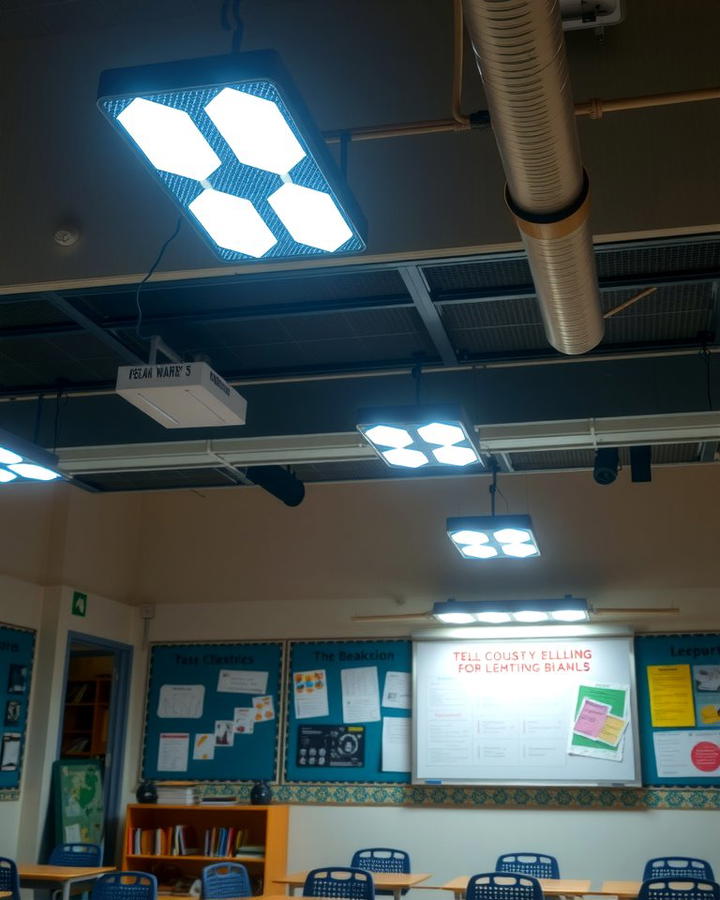
Highlighting display boards with accent lighting ensures that important information stands out. Spotlights or LED strips can be strategically placed to draw attention to bulletin boards, project showcases, or whiteboards. This not only enhances the aesthetic appeal of the classroom but also helps students focus on key content. Moreover, accent lighting can transform ordinary displays into captivating focal points. By incorporating this design element, teachers can emphasize critical materials and create a visually stimulating learning environment.
22. Pendant Lights for a Stylish Touch
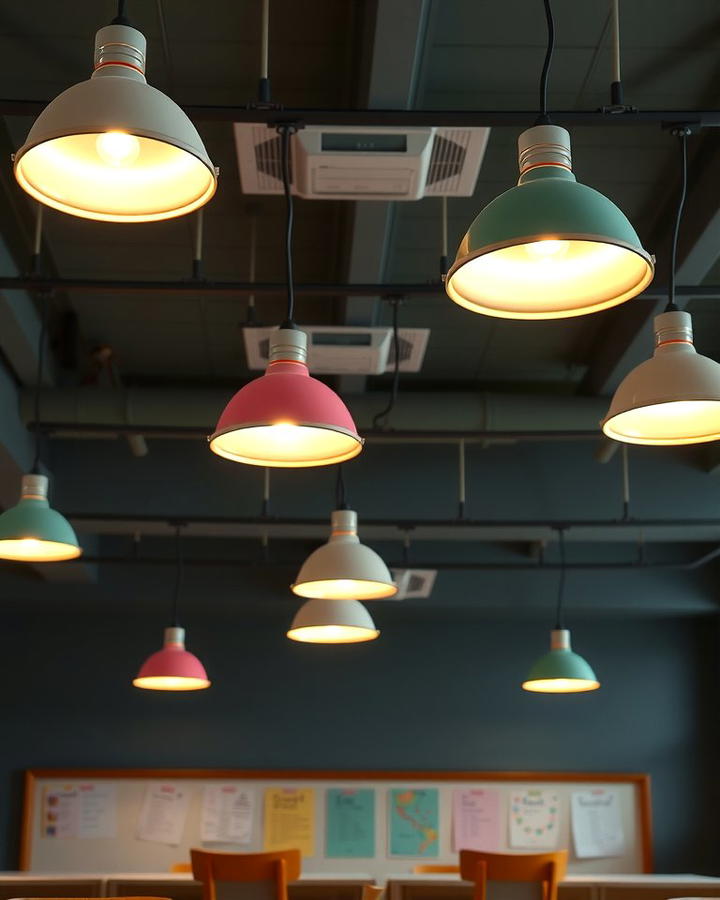
Pendant lights add an element of sophistication and warmth to classrooms. Hung from the ceiling, these fixtures provide focused lighting for specific areas like reading nooks or group tables. Beyond functionality, pendant lights serve as decorative accents, elevating the overall aesthetic of the room. Additionally, they are available in various shapes and sizes, allowing for customization to suit different themes. By incorporating pendant lights, educators can combine style and practicality, making the classroom both inviting and functional.
23. Motion-Sensor Lights for Energy Efficiency
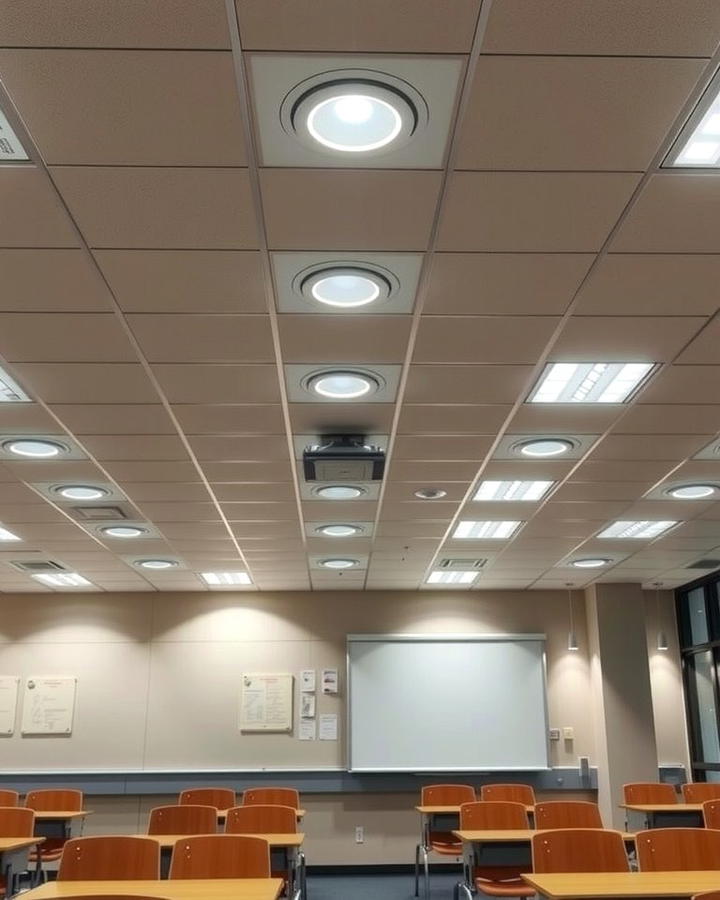
Motion-sensor lighting systems automatically adjust based on activity in the room, promoting energy conservation. These lights turn on when movement is detected and switch off when the area is unoccupied. For classrooms, this ensures that lights are only used when needed, reducing electricity costs and environmental impact. Additionally, motion-sensor systems eliminate the need for manual operation, simplifying classroom management. By adopting this technology, schools can create sustainable spaces without compromising on convenience or functionality.
24. Warm Lighting for Cozy Reading Corners
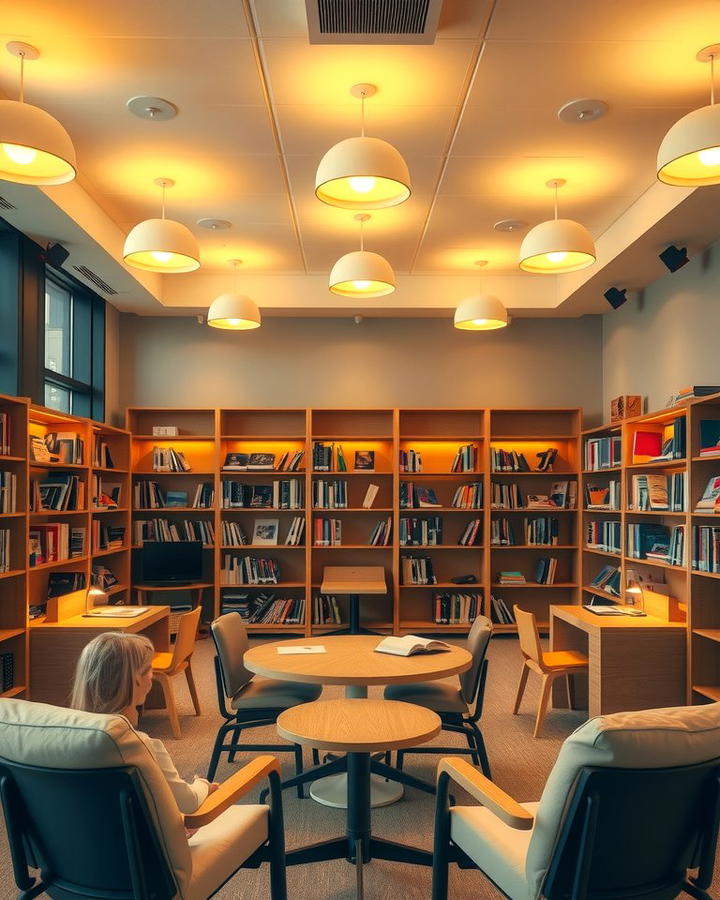
Warm lighting creates a comforting and inviting atmosphere, perfect for reading corners or relaxation areas. Soft, yellow-toned lights reduce harshness and provide a calming effect, encouraging students to unwind and enjoy their books. Moreover, warm lighting can help balance the overall brightness of the room, adding depth and variety to the space. For classrooms with designated quiet zones, this type of lighting enhances the ambiance and supports focused activities. By incorporating warm lighting, educators can nurture a love for reading in a serene environment.
25. Recessed Lighting for a Sleek Look
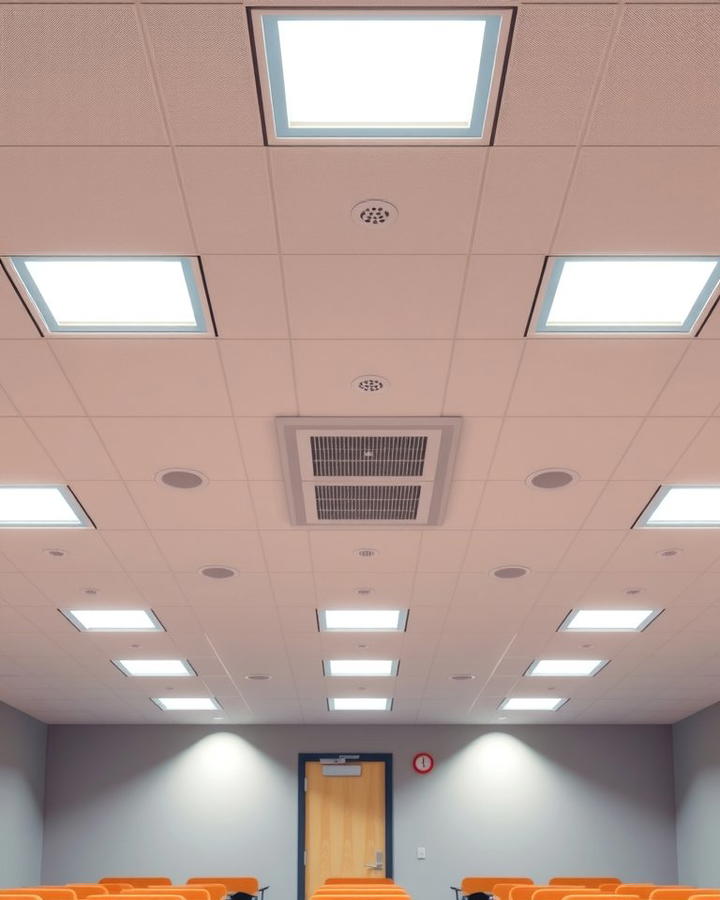
Recessed lighting offers a seamless and modern lighting solution for classrooms. Installed flush with the ceiling, these fixtures provide focused illumination without taking up visual or physical space. This design is particularly effective for classrooms with low ceilings, as it maintains an open and uncluttered appearance. Additionally, recessed lights can be strategically placed to ensure even coverage throughout the room. By choosing this option, educators can achieve a clean, professional look while enhancing visibility and functionality in the learning environment.
Conclusion
Lighting plays a pivotal role in creating an environment where students can thrive, and the right combination of natural and artificial light can make all the difference. Whether you’re incorporating task-specific desk lamps for focused activities, using dimmable systems for adjustable brightness, or adding a touch of creativity with color-changing LED strips, each idea has the potential to enhance learning in unique ways. By thoughtfully integrating these 25 classroom lighting ideas, you can create a space that is not only functional but also inspiring. Remember, the goal is to design a classroom that supports focus, creativity, and comfort—because when students feel at ease, they’re ready to learn. Let’s light up the future of education, one classroom at a time.
